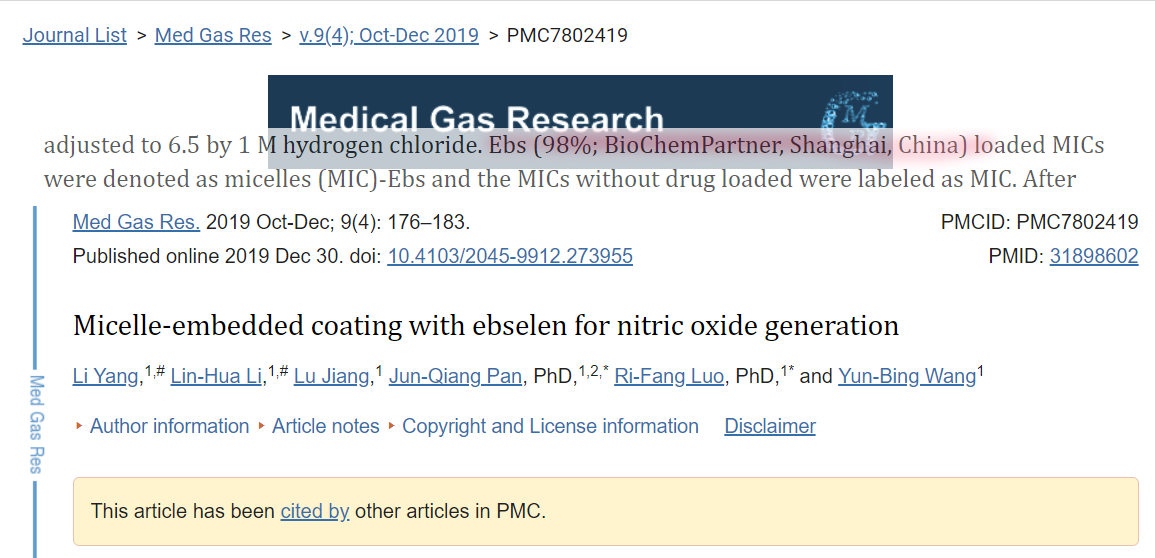Micelle-embedded coating with ebselen for nitric oxide generation

Abstract Nitric oxide generation is considered to be a key factor to mimic endothelial function in terms of anti-coagulation and anti-hyperplasia. Herein, ebselen which could play the similar role as glutathion peroxidase-like was loaded into micelles and was further assembled into a layer-by-layer coating. The ability of nitric oxide generation and corresponding biological effect were investigated. Endothelial-mimetic surface has now attracted huge attention in blood-contacting materials, due to its inherent ability of secreting nitric oxide. Among those categories, nitric oxide generation surface is considered to be safe and tunable in the modification of vascular biomedical devices. How to adsorb or immobilize glutathion peroxidase-like catalyst and maintain sustained/safe nitric oxide generation is full of interest. This study aimed at developing a functional coating constructed via layer-by-layer assembly to introduce the catalyst into the coating by pre-loading ebselen in micelles. We firstly introduced phenylboronic acid moiety into the micelle molecule backbone and grafted catechol moiety to chitosan backbone. Then, chitosan, micelles (containing ebselen) and heparin were adopted as polyelectrolytes and then alternatively assembled onto the substrate via layer-by-layer protocol. The catechol was conjugated to the amine groups of chitosan by Schiff base reaction to synthesize chitosan-catechol. The hydrophobic cholesterol was conjugated to the one end of the hydrophilic hyaluronic acid, and the hydroxymethylphenylboronic acid was conjugated to the other end via the esterification of carboxyl (–COOH) and hydroxyl (–OH). The modified hyaluronic acid could spontaneously form micelles in aqueous solution. Ebselen was the loaded into the as-prepared micelles. Chitosan-catechol, heparin, and micelles were alternatively assembled onto the substrate layer by layer to form a micelle-embedded coating. The micelle-embedded coating with ebselen was successfully obtained and the nitric oxide generation ability was in a safe level which was close to healthy endothelial cells. The coating could effectively inhibit platelet adhesion and smooth muscle cell proliferation. The use of ebselen preloaded into micelles could provide a sustained release of catalyst for in situ nitric oxide generation. Besides, this method could also be used to load diverse drugs and regulate desired properties. The study was approved by the Institutional Review Board of the West China Hospital in Sichuan University on March 3, 2018, with approval No. K2018044.




